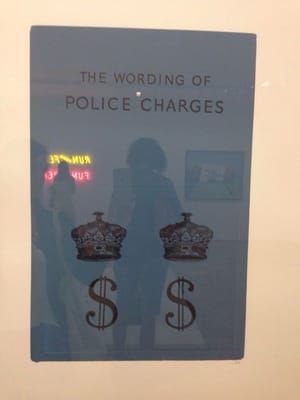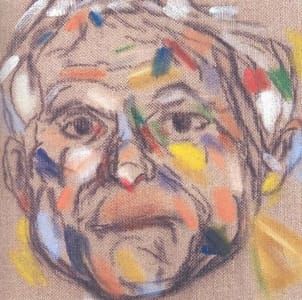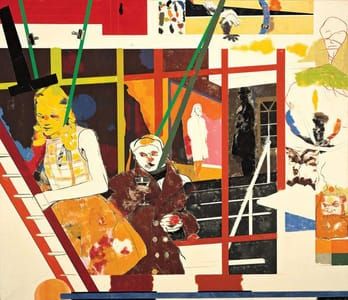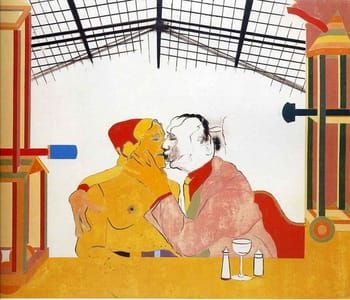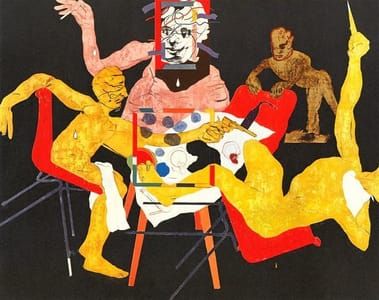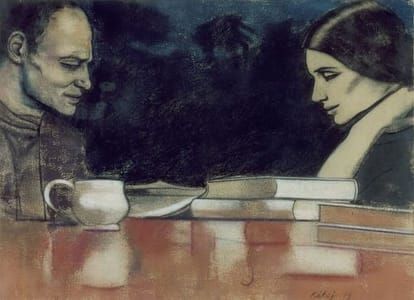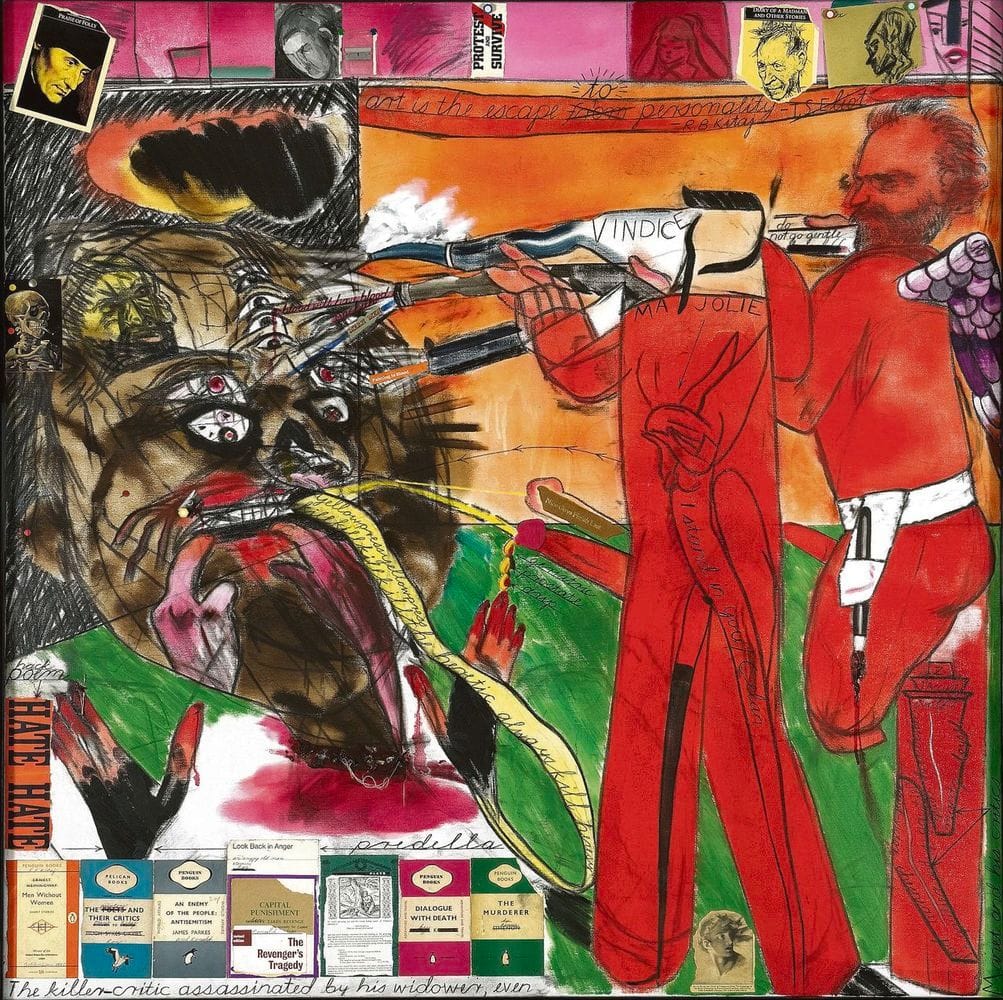

The Killer-Critic Assassinated by His Widower, Even, 1997
R. B. Kitaj / Ronald B. Kitaj
RB Kitaj’s greatest act of revenge was this painting, displayed at the Royal Academy’s 1997 Summer Exhibition.
...a controversial exhibition at the Tate gallery in 1994 dramatically changed the course of the rest of Kitaj's life, and his art.
That 1994 show, a landmark for a living painter, became known to Kitaj as the "Tate war", and letters and documents that have now come to light reveal that the phrase was not an exaggeration. What had been planned as the culmination and crowning glory of a life's work proved to be something quite different. On one side of the battlefield back then were the art critics of the British press, who seemed to have lined up to outdo one another in destroying Kitaj's claims to attention. And facing them were Kitaj, then 64, and his friends and fellow British painters – Lucian Freud, David Hockney, Howard Hodgkin, Frank Auerbach and others – who, letters now reveal, disagreed among themselves about how this savage and apparently highly personal broadside might best be countered.
The real casualty of this battle, in Kitaj's eyes, was his beloved wife and muse, Sandra Fisher, who died of a brain aneurysm aged 47, two weeks after his Tate show opened, and whose death the painter blamed directly on the shock of his very public critical humiliation. The fallout from this tragedy led to Kitaj's self-imposed exile from his adoptive London, along with his young son, Max, back to America, and to a studio in Los Angeles, where he nurtured an obsessive loathing for particular British critics that involved splenetic death threats and fantasies of violence.
Reading back through the archive of that time, and looking again at some of the work Kitaj made subsequent to the 1994 show – compulsive, defiantly erotic paintings of his late wife, as well as wild and exacting imaginings of firing squads taking aim at a many-headed Brian Sewell and Andrew Graham-Dixon – these wounds still feel very much open.
...Kitaj, always an intense and vividly articulate character, who had run away to sea from his home in Cleveland, Ohio at 17 and become an important and charismatic fixture in the London art world from the moment his first solo show had opened in 1963, ranted with a sense of loss and despair to his closest friends. These included his long-time confidant Philip Roth, who, it seems, partly based the outrageous character of Mickey Sabbath, in his incandescent novel Sabbath's Theater, on the grief-stricken Kitaj – the book is told in the voice of a furious and confessional puppeteer driven mad by vividly sexual dreams of his lost lover, tortured by a fear of impotence and oblivion, by turns contemplating suicide and raging against the dying of the light.
...the opening itself was a really euphoric occasion, large numbers of people from the art world, and a real kind of confirmation of Kitaj's dedication over the years. When we went to bed after the party there was this sense of pleasure that he was getting his due for all of that, and then the following morning this extraordinary cascade of vitriol began..."
...The main reason for the critics' damning verdict on the show, Morphet believes, was what was seen by one as Kitaj's "pseudo-intellectual bullshit". Kitaj was an eclectic reader and claimed literary inspiration for much of his work from writers ranging from TS Eliot to Franz Kafka to Walter Benjamin. He self-consciously rooted himself in an outsider's tradition, of Jewish intellectualism, equally obsessed with language and image. At the suggestion of Nicholas Serota, the Tate director, Kitaj sought to reflect some of this erudition in extended captions to his paintings that explained their inspiration and genesis. To many of the critics, who saw Kitaj invading their space, telling them what to think, this appeared to be fighting talk. Andrew Graham-Dixon in the Independent called him an "inveterate name-dropper... The Wandering Jew, the TS Eliot of painting? Kitaj turns out, instead, to be the Wizard of Oz: a small man with a megaphone held to his lips."... Fascinating article continues at https://www.theguardian.com/artanddesign/2013/feb/10/rb-kitaj-obsessions-tate-war
Kitaj felt that the critics attacked him not only as an artist, but also as an American and a Jew. Kitaj's reaction went beyond a deep feeling of hurt: he also blamed the critics for his wife's sudden death shortly after the show. (http://www.jmberlin.de/kitaj/en/kitaj-the-killer-critic.php)
Uploaded on Oct 28, 2016 by Suzan Hamer
Arthur
Wait what?

